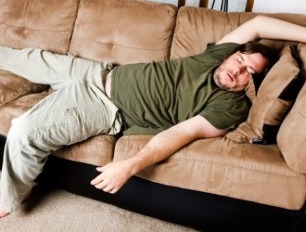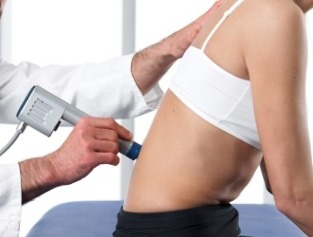
Lumbar osteochondrosisis one of the most common diseases of the spine.
It is characterized by deformation of the cartilage tissue of the vertebrae.
As long as the spine is healthy, the spine remains flexible and mobile.
If the condition worsens, the intervertebral discs lose their elasticity and begin to dry out.
As a result, patients experience severe pain in the lower back.
What is this?
When dystrophic-degenerative changes appear in the tissues of the vertebrae, they gradually begin to disintegrate. If the vertebrae in the lumbar region are mainly affected, osteochondrosis of the lumbar spine is diagnosed.
Clinical presentation
With osteochondrosis, the cartilage tissue of the spine begins to lose moisture, the elasticity of the intervertebral discs deteriorates. Over time, the height between the vertebrae decreases. Under increasing load, the fibrous ring begins to crack, the intervertebral disc comes out.This causes the nerve endings to constrict and appear painful.
Without proper treatment, osteochondrosis develops. Intervertebral discs harden, cushioning properties deteriorate. Growths occur in the bone tissue of the spine that presses on the nerve endings. For this reason, patients experience persistent pain.
Degrees and Classification
Experts distinguish 4 degrees of spinal osteochondrosis:
- The process of destruction of intervertebral discs begins, the symptoms of the disease are mild, burning sensation, tingling, pain appear only after physical exertion. Patients talk about the appearance of dull back pain, sometimes spreading to the lower back.
- The distance between the vertebrae gradually decreases and the ring fibrosis begins to collapse. Intervertebral discs constrict, exceed physiological limits, put pressure on nerve roots. Patients complain of material pain in the thighs, thighs and legs during walking. In addition to pain, a burning sensation and cold are possible.
- Fibrous rings are destroyed, examination reveals an intervertebral hernia in patients. Pain is a constant concern regardless of the load.
- Bone growths are visible from the vertebrae. Cartilage atrophy, the patient has difficulty moving. As a result, the spine loses mobility and elasticity, and the patient becomes disabled.
|
|
Experts distinguish such a period of osteochondrosis:
- debut;
- complication;
- remission;
- stabilization.
Treatment depends on the stage of the disease, the nature of the deformity and the severity of the symptoms of the disease.
ICD 10 code
According to the International Classification of Diseases, spinal osteochondrosis is coded M42. Separately, there are juvenile (M42. 0), adult (M42. 1) and undiagnosed (M42. 9) osteochondrosis.
Prevalence and Significance
The lumbar region is more prone to developing osteochondrosis than other parts of the lumbar region. This is due to the increasing load in this area, as it must support body weight. With a weak muscular corset, the condition of the intervertebral discs begins to deteriorate rapidly, destroying them.
Often people over the age of 30suffer from lumbar osteochondrosis. Although found in young patients. Osteochondrosis is diagnosed in almost 80% of patients with low back pain.
Examination of patients over 40 years of age revealed that most of them have characteristic changes in the intervertebral discs. However, in the absence of clinical manifestations, a person is not considered ill.
In the absence of adequate therapy, the disease progresses. In negligent forms, it causes disability of the patient.
Risk factors and causes
Representatives of such professions often suffer from osteochondrosis: programmers, office workers, builders, loaders, waiters, drivers.

These are the risk factors that increase the likelihood of developing osteochondrosis.:
- overweight;
- unhealthy diet;
- posture problems;
- genetic predisposition;
- lack of sleep;
- frequent stress;
- constant hypothermia;
- must be in a state of anxiety for a long time;
- low physical activity.
Causes of osteochondrosis of the lumbar spineinclude:
- natural aging processes of the body;
- metabolic problems;
- spinal injuries;
- back problems;
- straight legs;
- intense physical activity, such as weightlifting;
- problems in the lumbar joints (rheumatoid arthritis);
- endocrine diseases;
- Digestive and cardiovascular problems.
Some experts believe that the tendency to develop osteochondrosis is transmitted at the genetic level.
Results
A change in the cartilage tissue between the vertebraecauses disruption of the ring fibrosis and the appearance of a hernia. Patients begin to complain of severe pain in the lumbar region, gluteal muscles, thighs and lower legs. However, this is not a possible complication of osteochondrosis.
Prolonged irritation of the spinal nerve causes inflammation.Patients develop sciatica.
With osteochondrosismay develop sciatica(inflammation of the sciatic nerve). The disease leads to severe pain, numbness of the lower back and legs. Patients begin to walk, leaning to one side. This causes more curvature of the spine and further destruction of the intervertebral discs.
Osteochondrosis causes instability of the vertebrae. The lumbar region begins to move from the sacrum under the influence of body weight. In women, this instability causes problems with the internal organs (uterus, ovaries, appendages), in men - with problems with strength.
When intervertebral discs are destroyed,, the blood supply to the spinal cord is disrupted, and the displacement of the vertebrae causes compression myelopathy.
Cauda equina syndrome is the most dangerous complication. It consists of the action of nerve roots. In severe cases, osteochondrosis causes paresis of the lower extremities or paralysis of both legs.
If you see a doctor when the first symptoms appear and you do not see the need for treatment, it is possible to prevent negative consequences.
symptoms
Osteochondrosis is not immediately visible. In the initial stages, the patient has no pain or discomfort. Complaints usually occur when the disease progresses to stage 2.
The main symptoms of lumbar osteochondrosisinclude:
- back pain that worsens as the disease progresses;
- impaired mobility: problems occur when trying to bend, turn, sensations when changing body position are described by patients as "electric shock", in many cases the pain spreads to the legs;
- There is a change in the sensitivity of the extremities, burning sensation in the affected area, numbness, crawling, tingling, which occurs against the background of damage to the nerve roots;
- muscle weakness, lack of tendon reflexes;
- local temperature drop;
- increased sweating;
- pallor, dry skin in the problem area;
- urinary excretion, sexual dysfunction (in severe osteochondrosis).
Some patients have arterial spasm in the legs. However, the symptoms are expressed only in the acute form of osteochondrosis. Exacerbation may begin suddenly after hypothermia, awkward movements, or strenuous physical activity.
Which doctor treats?
If you have back pain,you should consult an orthopedist and neurologist. The examination assesses the patient's neurological condition and checks how the spine is performing its functions. Doctors also assess the condition of the lumbar and gluteal muscles.
For experienced professionals, one examination is enough to make an initial diagnosis. However, to confirm this, the patient is sent for hardware diagnostics.
Diagnostic Methods
The simplest and most accessible method for detecting osteochondrosis isradiography. However, a computer or magnetic resonance imaging is assigned to obtain a more accurate image.
MRIallows you to examine your back as accurately as possible. In fact, the problem area is repeatedly photographed during the procedure.
Treatment

The tactics of therapy are chosen by the doctor depending on the patient's condition, the stage of osteochondrosis and the clinical manifestations of the disease.
a doctorcan prescribe:
- drug treatment, non-steroidal anti-inflammatory drugs, hormonal drugs, analgesics are selected;
- drug blockade, analgesics, hormonal drugs are injected into the affected area or into the muscles around the problem spine, which immediately relieves inflammation and relieves pain;
- manual therapy, massage, physiotherapy, recommended after cessation of the acute phase of the disease, you can increase the effectiveness of drug therapy with the help of physiotherapy;
- therapeutic gymnastics;
- acupuncture.
In advanced cases, surgery is required. If conservative treatment does not give the expected result, surgery is prescribed.
Result
Osteochondrosis is diagnosed with the progression of dystrophic-degenerative changes in the cartilage of the spine. In advanced forms, the disease can cause not only the appearance of persistent severe pain, but also paresis and paralysis of the lower extremities.
- You may suspect the development of osteochondrosis due to the appearance of back pain. As the disease progresses, the pain increases significantly, the spine loses mobility.
- Depending on the degree of destruction of the intervertebral discs, there are 4 stages of the disease.
- More often, this diagnosis is made after the age of 30. Osteochondrosis is diagnosed in almost 80% of patients who seek medical attention due to back pain.
- People who lead an inactive lifestyle are susceptible to osteochondrosis, are in an unnatural condition for a long time, and often experience physical exertion.
- The main symptoms of osteochondrosis are pain and impaired lumbar mobility.
- Patients have leg problems due to the destruction of the intervertebral discs in the lumbar spine.
- If left untreated, pain increases,may develop sciatica, vertebral instability, compression myelopathy. In advanced cases, paralyzes the lower extremities.
- In case of painshould consult a neurologist and orthopedist. The patient is referred for X-ray, computed tomography or magnetic resonance imaging.
- Depending on the situation,medication, blockades, massage, manual therapy, physiotherapy, physiotherapy exercises or surgeryare prescribed.



































